Anthrax?
This morning I dragged myself out of bed early enough to take a tour of Discovery Hut, a historic relic of Robert Falcon Scott's 1901 - 1904 expedition. We met our tour guide outside of the cafeteria for a quick briefing before we started out. She warned us that there were traces of anthrax in the hut, as well as asbestos, so we had to be careful not to touch anything. Anthrax is a disease caused by a bacteria (Bacillus anthracis). Anthrax can form dormant spores that can survive in harsh climates such as Antarctica. The evidence for Anthrax found at Discovery Hut was probably carried by the Manchurian ponies and Himalyan Mules that Scott brought there in 1911. Click here to learn more about anthrax at Scott's huts.
To the Hut!
A group of eager "tourists" (mostly researchers) set out with our guide to Discovery Hut. Discovery Hut sits near the top of Hut Point on Ross Island and is a short walk from McMurdo Station's central area.
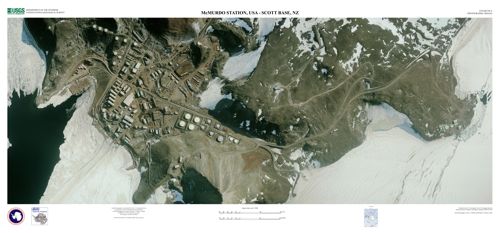
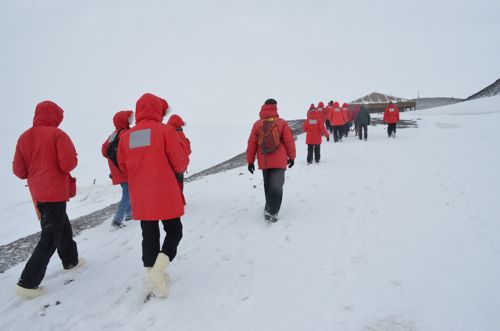
Who came here?
In the late 19th Century, the prize of conquering Antarctica, and specifically the geographic and magnetic South Poles, was highly sought after. Members of the Royal Geographic Society of Great Britain were interested in doing just this. Spurred by competition, the leader of the Royal Geographical Society, Sir Clements Markham, secured funding for the National Antarctic Expedition from 1901 - 1904. Robert F. Scott was chosen to lead the expedition on a vessel called The Discovery.
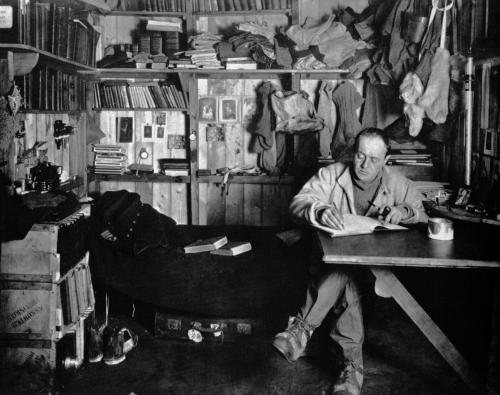
The Discovery sailed from London on July 31, 1901. Months later it arrived in New Zealand to collect food, including tinned meat, dehydrated vegetables, soups, biscuits, and 45 live sheep! They also took on board three huts: one for a magnetic observatory, one for a seismograph, and a pre-fabricated building as a station. Below are some of the items I saw in at the Discovery Hut that were left behind.
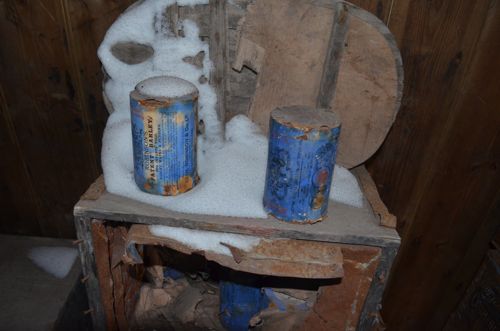
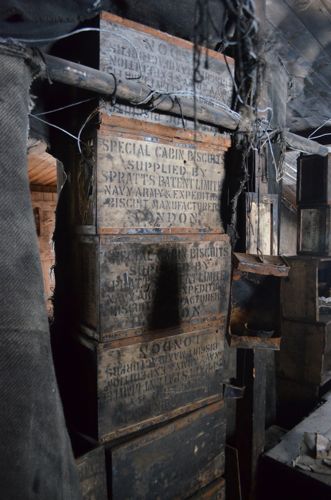
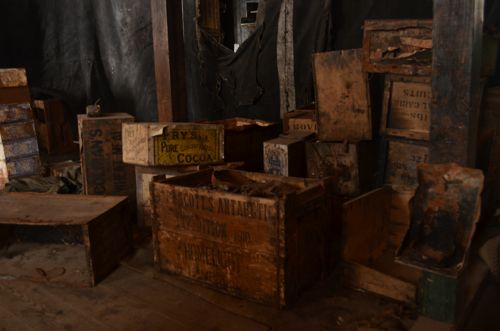
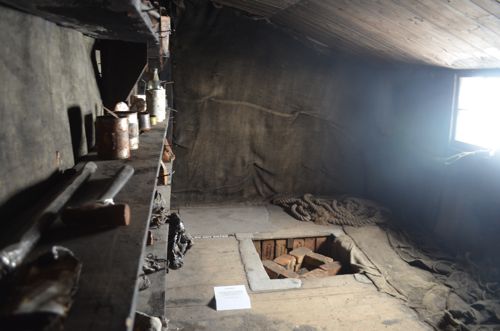
Who made Discovery Hut?
The station hut was made by James Moore in Sydney for 360 pounds. The hut was designed by Professor Gregory, who was supposed to lead the scientists but resigned before the Discovery left. The station hut (later named Discovery Hut) was constructed of Douglas fir and Scots pine. It was built with a veranda surrounding it, typical of Australian houses. It also was constructed to have a pyramid shaped roof, supported by a center beam, a heating stove, and paneling on the walls, ceiling and floor that allowed air to sit for insulation.
Click on the video to see what the inside of the hut looks like today.
http://
Scott Arrives
The Discovery stopped in Port Chalmers to bury Charles Bonner (a seaman who had fallen from the mainmast). Soon after, Scott took a ride up in a hydrogen air balloon to preview the harbors of Antarctica near today's McMurdo station. He took the first aerial photograph of the harbor and decided to land in Winter Quarters Bay to set up the Discovery Hut. (Winter Quarters Bay will become important with my research team later, since this is a place they collect data from.) The intention was to stay in the Discovery Hut with a smaller group of explorers, while the Discovery left Antarctica, but Scott decided to secure the Discovery for the winter in February. The Discovery was frozen in the ice for two years, and was where many members of the expedition party stayed.
Discovery Hut was finished on March 8. For more details about the hut, including Scott's own description of it, please click here
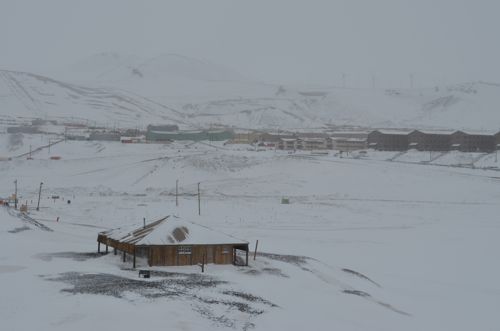
My Impressions
I grew up in a suburb of Boston, Massachusetts and have had the pleasure of visiting re-created historical homes from the past. There are plaques and signs explaining the refurbished furniture and tools to give a sense of the place. However, stepping inside Discovery Hut today was not just a realistic interpretation of Scott's experience in the early 1900s. Discovery Hut allows you to step back in time since the remnants have been left undisturbed. There were no plaques or plastic barriers explaining his and his crew's life, instead there was the smell of dead seals and old cans, and the ghostly feeling of life on the ice in the early 20th Century. Every object in the hut had been used and touched by the original explorers. The impression it left with me was something I had never experienced before. Leaving the hut, I looked over the cliff to see two Weddell Seals on the ice. Wind gusts blew cold air and snow over them and the thought of being down there chilled me to the core. It is amazing how harsh Antarctica is, and yet how living things thrive here--from the Weddell Seals to us! Still, I'm glad to have the modern buildings and resources I have and appreciate the suffering older explorers endured to put Antarctica on the map.
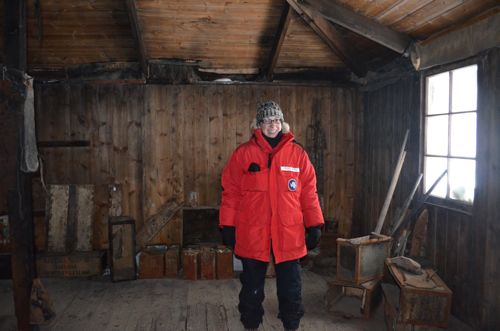
*Information regarding Discovery Hut was taken from www.nzaht.org/AHT
Question
Discovery Hut is a unique structure at McMurdo. What aspects of the structure do you think are helpful to Antarctic's climate? What aspects of the structure do you think are ill-suited to Antarctica? Explain your answer.
Math Connection
Look at the picture of Discovery Hut. How many different geometric shapes can you find?
The Discovery Hut was purchased for 360 pounds in 1901. 1 pound in 1901 is worth around 80 pounds today. How much would Discovery Hut have cost to build today?
The entire cost of the 1901 - 1904 Expedition by Scott and his team cost 90,000 pounds. If 1 pound in 1901 is worth 80 pounds today, how much would the entire expedition have cost to put on today?

Comments